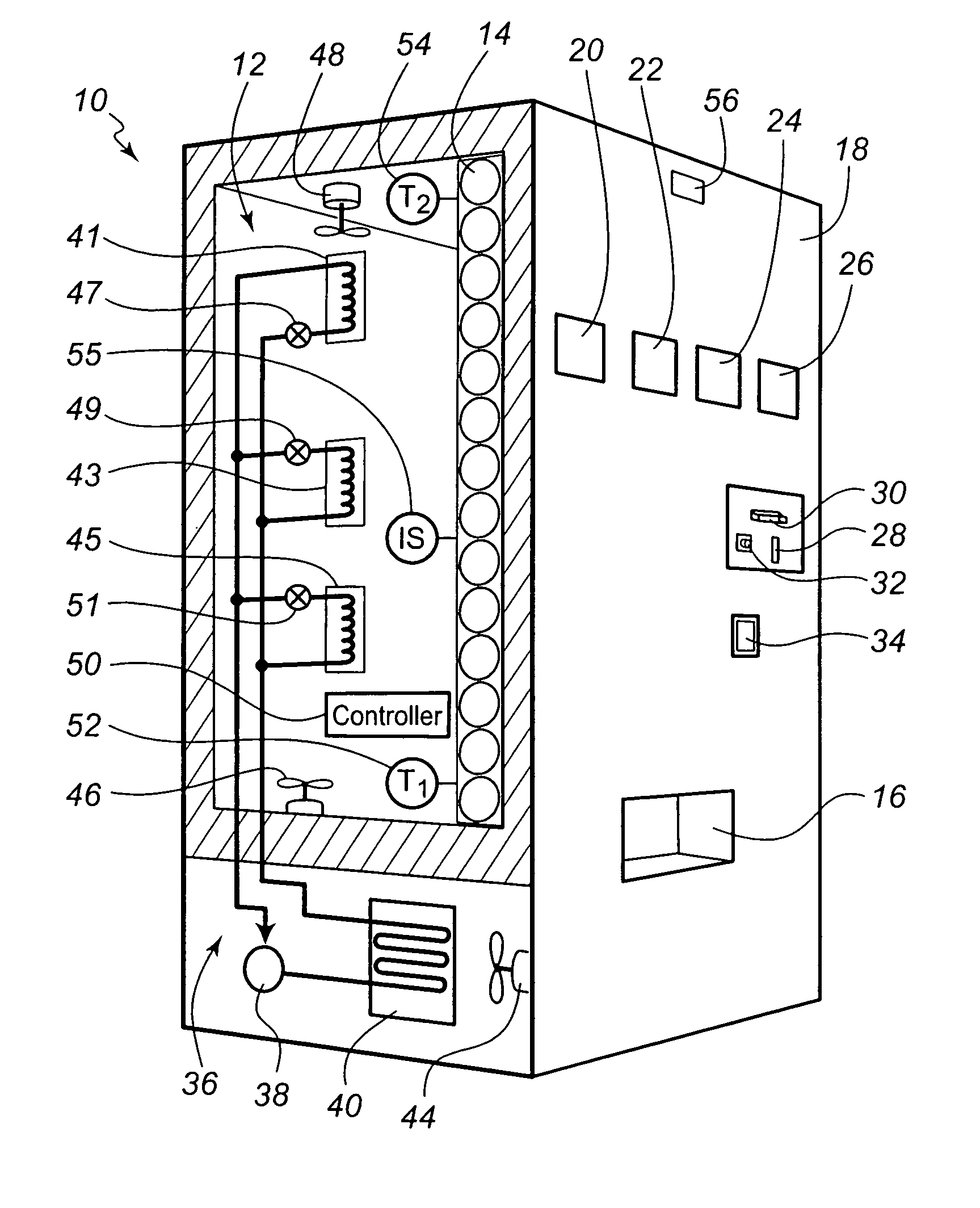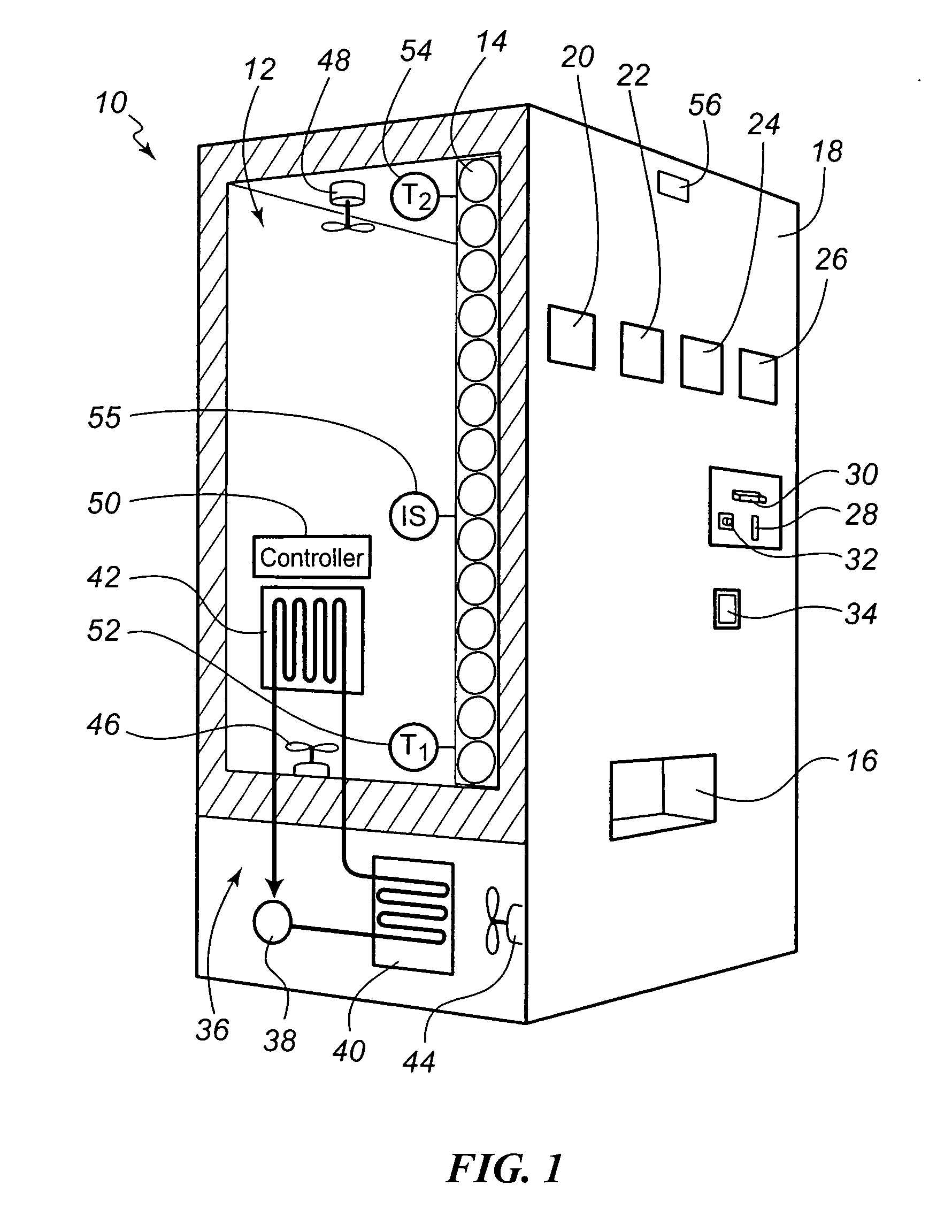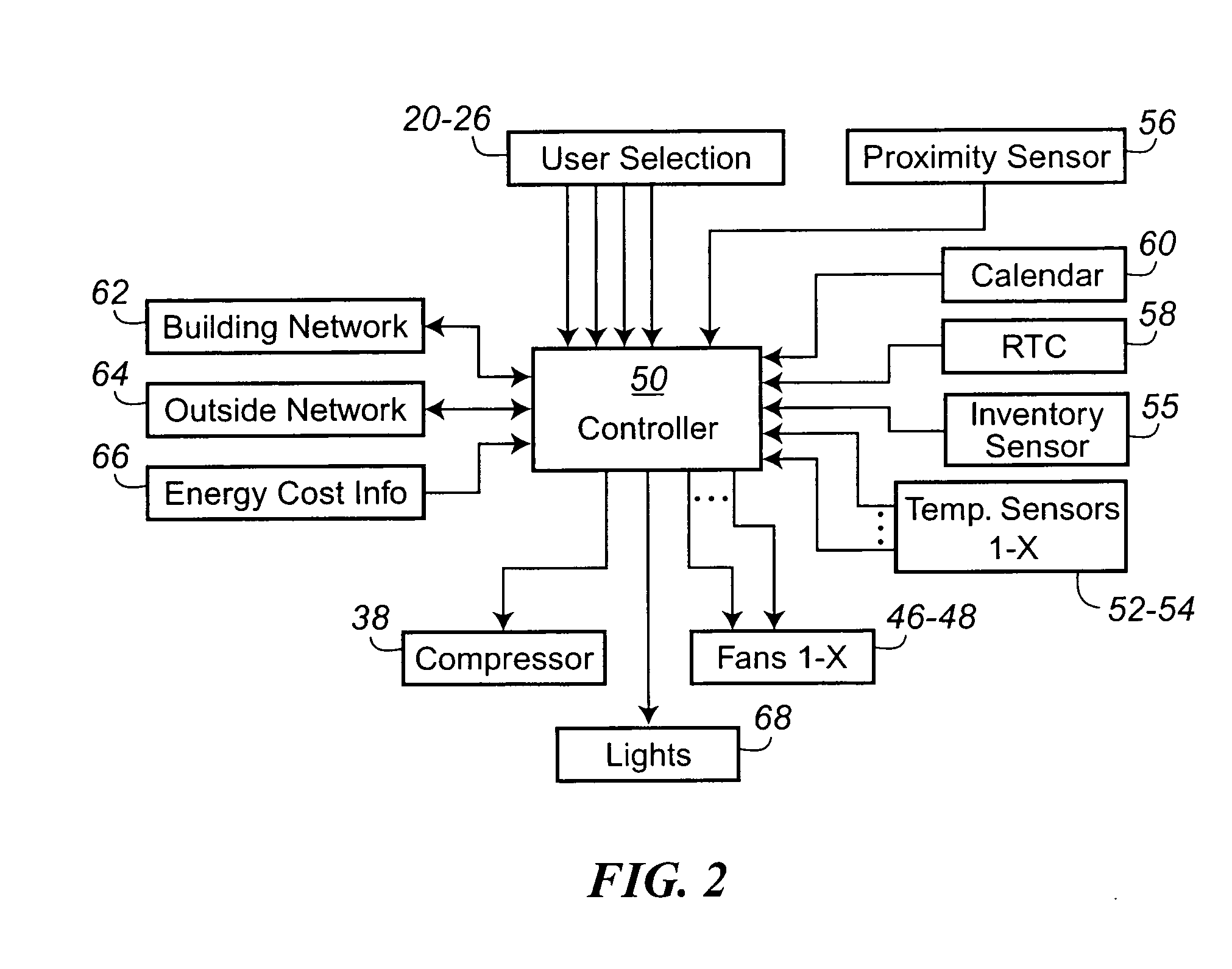Compressor system for vending devices and the like
a vending machine and compressor technology, applied in the field of vending machines, can solve the problems of unacceptably high vending machine temperature, difficulty in determining how, and reduced profit of vending machines, so as to reduce the energy consumption of vending machines and minimize power consumption.
- Summary
- Abstract
- Description
- Claims
- Application Information
AI Technical Summary
Benefits of technology
Problems solved by technology
Method used
Image
Examples
Embodiment Construction
[0038] Turning now to the drawings, there is illustrated in FIG. 1 a simplified partial cut-away illustration of a vending machine for which the system and method of the present invention finds particular applicability. This vending machine 10 includes an insulated product storage compartment 12 in which the products to be vended 14 are stored. For a typical beverage vending machine, the products to be vended 14 are stored in essentially vertical stacks within the storage compartment 12. In this way a gravity feed may supply product to the bottom of the stack from which the product is vended to the dispensing compartment 16, which is typically located on the front panel 18 of the vending machine 10. As will be recognized to those skilled in the art, a particular product is vended in response to user selection of one of a number of product selection buttons 20-26 also located on the front panel 18 of the vending machine 10. The consumer pays for the desired product by inserting money...
PUM
 Login to View More
Login to View More Abstract
Description
Claims
Application Information
 Login to View More
Login to View More - R&D
- Intellectual Property
- Life Sciences
- Materials
- Tech Scout
- Unparalleled Data Quality
- Higher Quality Content
- 60% Fewer Hallucinations
Browse by: Latest US Patents, China's latest patents, Technical Efficacy Thesaurus, Application Domain, Technology Topic, Popular Technical Reports.
© 2025 PatSnap. All rights reserved.Legal|Privacy policy|Modern Slavery Act Transparency Statement|Sitemap|About US| Contact US: help@patsnap.com



